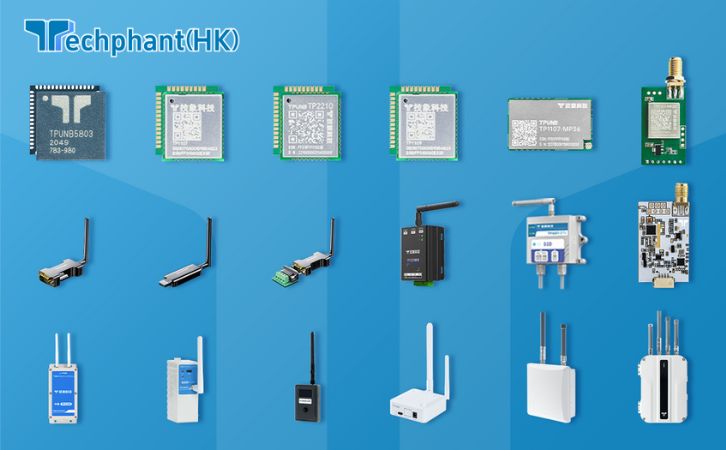The Internet of Things (IoT) has revolutionized industries by enabling seamless connectivity between devices, from smart homes to industrial systems. However, the massive volume of data transmitted across IoT networks introduces significant security challenges. IoT devices, often resource-constrained and deployed in diverse environments, are vulnerable to cyberattacks that can compromise data integrity, confidentiality, and availability. Ensuring secure data transmission is critical to protecting sensitive information and maintaining trust in IoT ecosystems. This article explores the key aspects of security in IoT data transmission, detailing strategies, challenges, and solutions across four critical domains.
I. Encryption and Data Confidentiality
Encryption is the cornerstone of secure IoT data transmission, ensuring that data remains confidential and protected from unauthorized access. IoT devices typically transmit sensitive information, such as personal data in smart homes or operational metrics in industrial systems, making encryption essential to prevent eavesdropping. Advanced Encryption Standard (AES), with key lengths of 128 or 256 bits, is widely used in IoT protocols like LoRaWAN, Zigbee, and MQTT due to its balance of security and efficiency. For example, LoRaWAN employs AES-128 to encrypt payloads, using separate keys for network and application layers to enhance security.
In resource-constrained IoT devices, lightweight encryption algorithms like PRESENT or SPECK are often implemented to minimize computational overhead while maintaining robust protection. These algorithms are optimized for devices with limited processing power, such as battery-powered sensors. Additionally, end-to-end encryption ensures that data is protected from the device to the cloud, preventing intermediaries (e.g., gateways) from accessing plaintext. For instance, in smart healthcare, end-to-end encryption secures patient data transmitted from wearable devices to medical servers, complying with regulations like HIPAA.
Key management is a critical aspect of encryption. Secure key distribution and storage, often using protocols like Diffie-Hellman or hardware-based Trusted Platform Modules (TPMs), prevent keys from being intercepted or compromised. However, implementing robust encryption in IoT is challenging due to device heterogeneity and the need for scalable key management across millions of devices. Despite these challenges, encryption remains a fundamental defense, ensuring data confidentiality in IoT ecosystems.
II. Authentication and Access Control
Authentication is vital to verify the identity of IoT devices and prevent unauthorized access to networks. Without proper authentication, attackers can impersonate legitimate devices, injecting malicious data or gaining control of systems. IoT protocols employ various authentication mechanisms, such as pre-shared keys (PSKs), digital certificates, or token-based systems. For example, MQTT uses Transport Layer Security (TLS) with X.509 certificates to authenticate clients and brokers, ensuring only authorized devices communicate.
In Sub-GHz networks like LoRaWAN, devices authenticate using unique identifiers (DevEUI) and session keys generated during a join procedure, preventing spoofing attacks. Biometric or multi-factor authentication (MFA) is also emerging in consumer IoT, such as smart locks, where users combine passwords with fingerprint scans for access. Role-based access control (RBAC) further enhances security by restricting device permissions based on their function. For instance, in an industrial IoT setup, a temperature sensor may only transmit data, while a control unit can issue commands, reducing the attack surface.
Challenges in IoT authentication include managing credentials across diverse devices and ensuring scalability. Many IoT devices lack the computational power to handle complex authentication protocols, making them vulnerable to brute-force attacks. Additionally, default or weak credentials, often left unchanged by users, are a common exploit vector. To address these issues, manufacturers must implement secure bootstrapping processes and regular credential updates, while network administrators should deploy intrusion detection systems to identify unauthorized access attempts.
III. Data Integrity and Tamper Resistance
Ensuring data integrity is critical to prevent attackers from altering IoT data during transmission, which could lead to incorrect decisions or system failures. Message Authentication Codes (MACs) and hash functions, such as HMAC-SHA256, are commonly used to verify that data has not been tampered with. For example, in smart metering, Sub-GHz protocols like Wireless M-Bus use MACs to ensure that consumption data sent to utilities is authentic and unaltered, preventing fraud or billing errors.
Digital signatures, based on asymmetric cryptography (e.g., RSA or ECDSA), provide stronger integrity guarantees by linking data to the sender’s identity. In industrial IoT, digital signatures verify the authenticity of firmware updates, preventing attackers from injecting malicious code. Blockchain-based solutions are also gaining traction for data integrity, particularly in supply chain IoT, where distributed ledgers record sensor data immutably, ensuring traceability.
However, ensuring integrity in IoT is challenging due to resource constraints and the risk of physical tampering. Devices deployed in unsecured locations, such as outdoor environmental sensors, are susceptible to physical attacks that manipulate hardware or extract cryptographic keys. To mitigate this, tamper-resistant hardware, such as secure enclaves or physically unclonable functions (PUFs), can protect against physical attacks. Additionally, regular integrity checks and over-the-air (OTA) updates help detect and remediate compromised devices, maintaining trust in IoT data.
IV. Network Security and Intrusion Prevention
Securing the network layer is essential to protect IoT data transmission from attacks like man-in-the-middle (MITM), denial-of-service (DoS), or packet sniffing. Secure communication protocols, such as TLS or Datagram Transport Layer Security (DTLS), provide a robust framework for encrypting and authenticating data at the network level. For example, CoAP (Constrained Application Protocol), commonly used in IoT, supports DTLS to secure data transmission over UDP, which is suitable for resource-constrained devices.
Intrusion prevention systems (IPS) and firewalls tailored for IoT networks monitor traffic for suspicious activity, blocking unauthorized access or malicious packets. In smart city deployments, Sub-GHz networks like LoRaWAN use network-layer encryption and integrity checks to prevent MITM attacks, ensuring secure communication between sensors and gateways. Segmentation of IoT networks, where devices are isolated into subnets based on function, further reduces the risk of lateral attacks. For instance, in a smart factory, sensors and actuators may operate on separate subnets to limit the impact of a breach.
Challenges in network security include the scalability of IPS for large IoT networks and the vulnerability of gateways, which aggregate data from multiple devices and are prime targets for attackers. Over-the-air firmware updates, often transmitted over Sub-GHz or other IoT protocols, must be secured to prevent exploitation. Emerging technologies like Software-Defined Networking (SDN) and Network Function Virtualization (NFV) offer dynamic solutions for IoT network security, enabling real-time threat detection and mitigation. Despite these advances, continuous monitoring and robust network design are essential to safeguard IoT data transmission.
Conclusion
Securing IoT data transmission is a multifaceted challenge that requires a combination of encryption, authentication, integrity measures, and network security to protect against evolving cyber threats. Encryption ensures data confidentiality, even in resource-constrained environments, while authentication and access control prevent unauthorized access to IoT networks. Data integrity mechanisms, supported by tamper-resistant hardware, maintain trust in transmitted data, and robust network security protocols mitigate risks like MITM and DoS attacks. Despite challenges such as device heterogeneity, scalability, and physical vulnerabilities, advancements in lightweight cryptography, blockchain, and network virtualization are enhancing IoT security. As IoT adoption grows, prioritizing these security measures will be critical to safeguarding sensitive data, ensuring regulatory compliance, and fostering trust in connected ecosystems. Future developments in quantum-resistant cryptography and AI-driven threat detection promise to further strengthen IoT data transmission, addressing emerging risks in an increasingly connected world.


